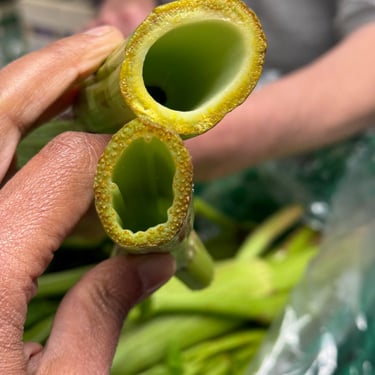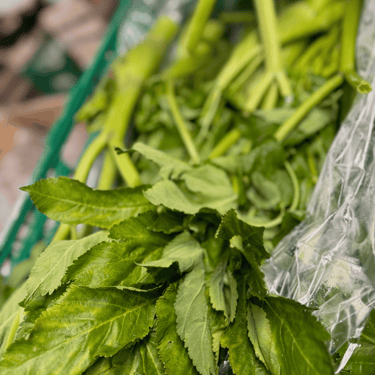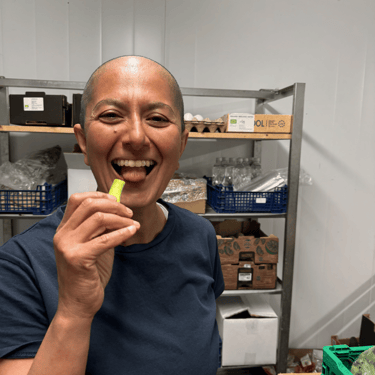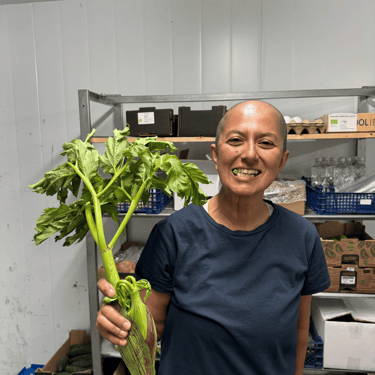Vossa Kvanne
Vosse kvanne – Norway’s historic herb from Voss.
NORWAY
Zayera Khan
5/16/20253 min read
Vossa kvanne (Angelica archangelica ssp. litoralis), sometimes called vossakvann, is much more than a plant. It is a symbol of survival, medicine, cultural identity, and agricultural heritage in Western Norway — especially in the region of Voss. This highly aromatic plant has been cultivated for centuries and is now recognized both for its historical role and its place in modern sustainability movements.
🌱 Botanical and Medicinal Profile
Scientific Name: Angelica archangelica ssp. litoralis
Family: Apiaceae (Carrot/Parsley family)
Common Names: Kvanne (Norwegian), Garden Angelica, Vossa kvanne (Voss variety)
✅ Medicinal Properties
Historically, Angelica archangelica has been used across Europe, especially in the Nordic countries, for its numerous medicinal benefits:
Digestive Aid: The roots and stems contain essential oils with carminative properties – meaning they help reduce bloating and aid digestion.
Antimicrobial and Antiviral: Traditionally used to treat respiratory infections and fevers, particularly during medieval plagues.
Stimulating Circulation: Used in folk medicine to improve blood circulation and support the immune system.
Appetite Stimulant: Given to weak or undernourished individuals to stimulate hunger.
Detoxifying Agent: Used as a mild diuretic and for “cleansing” the body in traditional herbal practice.
🧪 Modern phytochemical studies have confirmed the presence of active compounds such as angelicin, coumarins, flavonoids, and volatile oils, which support its traditional use in herbal medicine.
🏔️ Cultural and Historical Importance in Voss
1. 🌾 A Cultivated Plant of Survival
Vossa kvanne was not gathered wild — it was carefully cultivated in kvanngardar (angelica gardens), especially around farms in Voss. These gardens were often fenced in to protect the valuable plant from animals, and the cultivation methods were passed down through generations.
2. 🍽️ Famine and Food Security
In times of famine, the entire plant was used:
Stalks were candied or cooked in porridge
Roots were boiled or dried
Leaves were used in soups
The plant’s high nutritional value, fast growth, and cold resistance made it a lifeline during food shortages, especially before potatoes became common in Norway.
3. ⛪ Sacred and Monastic Plant
Angelica was often grown in monastery gardens across Europe due to its medicinal properties. In Norway, the cultivation of kvanne was also regulated by law in some areas, showing how precious it was. The Latin name archangelica reflects its mythical and spiritual status, believed to have been revealed by the Archangel Michael as a divine gift against disease.
4. 🌍 Export and Trade
Kvanne was so valued that it became part of local trade, sometimes exchanged between farms or sold in towns. In Bergen and other Hanseatic ports, the aromatic stalks were known and traded as a luxury product.
🛡️ Preservation and Recognition
🌱 Slow Food Ark of Taste
Today, Vossa kvanne is listed in the Ark of Taste by the international Slow Food movement – a global initiative to protect endangered heritage foods. This listing recognizes its:
Unique genetic variety
Cultural significance
Risk of extinction due to modern agriculture
🧬 Genetic Lineage
Vossa kvanne is a locally adapted cultivar, selected over centuries for:
Thick, juicy stalks
Aromatic flavor
Resistance to cold climate
Its preservation is crucial for biodiversity and traditional food knowledge in Norway.
🥘 Modern Use and Revival
There is growing interest in Nordic cuisine and foraging culture, which has brought Vossa kvanne back into the spotlight:
Used in candies, liqueurs, and craft spirits (e.g., aquavit)
Flavoring in baked goods and fermented foods
Educational gardens and museums (e.g., Voss Folkemuseum) are reintroducing cultivation methods
Chefs and herbalists are now collaborating with local growers to bring this heritage plant into the modern kitchen and medicine cabinet.
🌿 Conclusion
Vossa kvanne is more than just an old plant. It is:
A symbol of resilience in Nordic agriculture
A living link to medieval herbal medicine
A cultural treasure of the Voss region
A heritage ingredient now being revived for a sustainable future
Preserving and sharing the story of Vossa kvanne connects us to the wisdom of the past — and offers inspiration for climate-resilient, local food systems of tomorrow




Vossa kvanne – Norway’s Ancient Healing Herb from Voss
✨ 5 facts about Vosse kvanne:
🧬 Ancient Superfood
Vosse kvanne (Angelica archangelica) was cultivated in medieval Norway and used for centuries as a food, spice, and medicine — especially during famines. Rich in vitamins and aromatic oils.🏔️ Unique to Voss
This particular subspecies was specially bred and maintained in the Voss area. Farmers selected the best varieties for flavor and strength, making it a localized heirloom plant.🧑🌾 Grown in "Kvanngardar"
Vosse families traditionally grew kvanne in protected gardens called kvanngardar, often passed down for generations.⛪ Protected by Church and State
In the Middle Ages, kvanne was so valued that monasteries cultivated it, and it was even protected by law!🏅 Ark of Taste & Geographical Indication
Vosse kvanne is listed in the Slow Food movement’s Ark of Taste – a global catalogue of endangered heritage foods – and is recognized as a product of protected geographical origin in Norway.
🌿 Strong, sweet, and spicy – this plant tells a story of resilience, tradition, and Nordic flavor.

